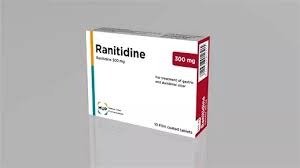Acidity can be quite unpleasant and disruptive. You might feel mild distress after eating, or you could experience lasting gut problems. Poor food habits, stress, and GERD are reasons why the stomach might create excess acid. If you’ve ever had heartburn, indigestion, or acid reflux, you might be familiar with Ranitidine.
For years, Ranitidine has been taken to help with various digestive problems caused by too much stomach acid. This post discusses the top five Ranitidine uses with regard to preventing and managing problems related to stomach acid.
1. Helping Relieve Heartburn and Indigestion
Ranitidine was taken for quick help with heartburn. It lowered the amount of acid produced by the stomach by stopping the H2 receptors from working. As a result, the acid in the food pipe caused less trouble and discomfort. People often use it after meals or before bed to manage symptoms triggered by food, drinks, or lying down soon after eating. Often available over the counter, it was best to take it 30 to 60 minutes before a heavy meal.
2. Healing and Preventing Peptic Ulcers
Low acid levels brought on by ranitidine allowed the lining of the stomach to get better after a peptic ulcer. It didn’t matter if the ulcers were formed due to infection or overuse of NSAIDs; Ranitidine helped the ulcers heal. It was also prescribed to stop these ulcers from coming back. Regular use of the medicine was said to lessen irritation and help the tissues heal.
3. Managing Gastroesophageal Reflux Disease (GERD)
GERD is a chronic condition caused by constant acid reflux that leads to damage to the esophagus. Many people took ranitidine to control this problem by lowering the amount of acid and decreasing inflammation. Many patients saw their symptoms of chest pain, regurgitation, or cough start to become less frequent. The medication relieved my symptoms and also guarded my food pipe from being affected by constant acid.
4. Addressing Zollinger-Ellison Syndrome
A much rarer problem, known as Zollinger-Ellison Syndrome, comes from tumors that produce an excess of stomach acid. The acid output was decreased, and the impact of the problem was reduced using ranitidine. It worked by stopping acid at the source, thus reducing the risk of ulcers and improving long-term digestion for its patients.
5. Taking Care of Your Acid Levels Before a Medical Intervention
Often, doctors would offer Ranitidine as a medication before surgery or endoscopic treatments. The reason behind the mechanical fast was to make sure stomach acid did not interfere during the surgical procedure. This helped a lot in people who may aspirate food or need to fast before receiving anesthesia. Before these procedures, taking Ranitidine lessened stomach acid and made them less risky and more comfortable.
Important Considerations
Previously commonly available, Ranitidine is no longer sold in the U.S. due to concerns about unsafe impurities that could harm health in the future. Be sure to see your doctor before using any medicine for acidity. Alternative H2 blockers and PPIs are now the main medications suggested.
If you get frequent symptoms, changing your food intake, cutting out spicy or caffeinated food, managing stress, and limiting meals may help manage acid issues. It’s important to talk to a doctor if your symptoms linger before you start or keep taking any medication.
